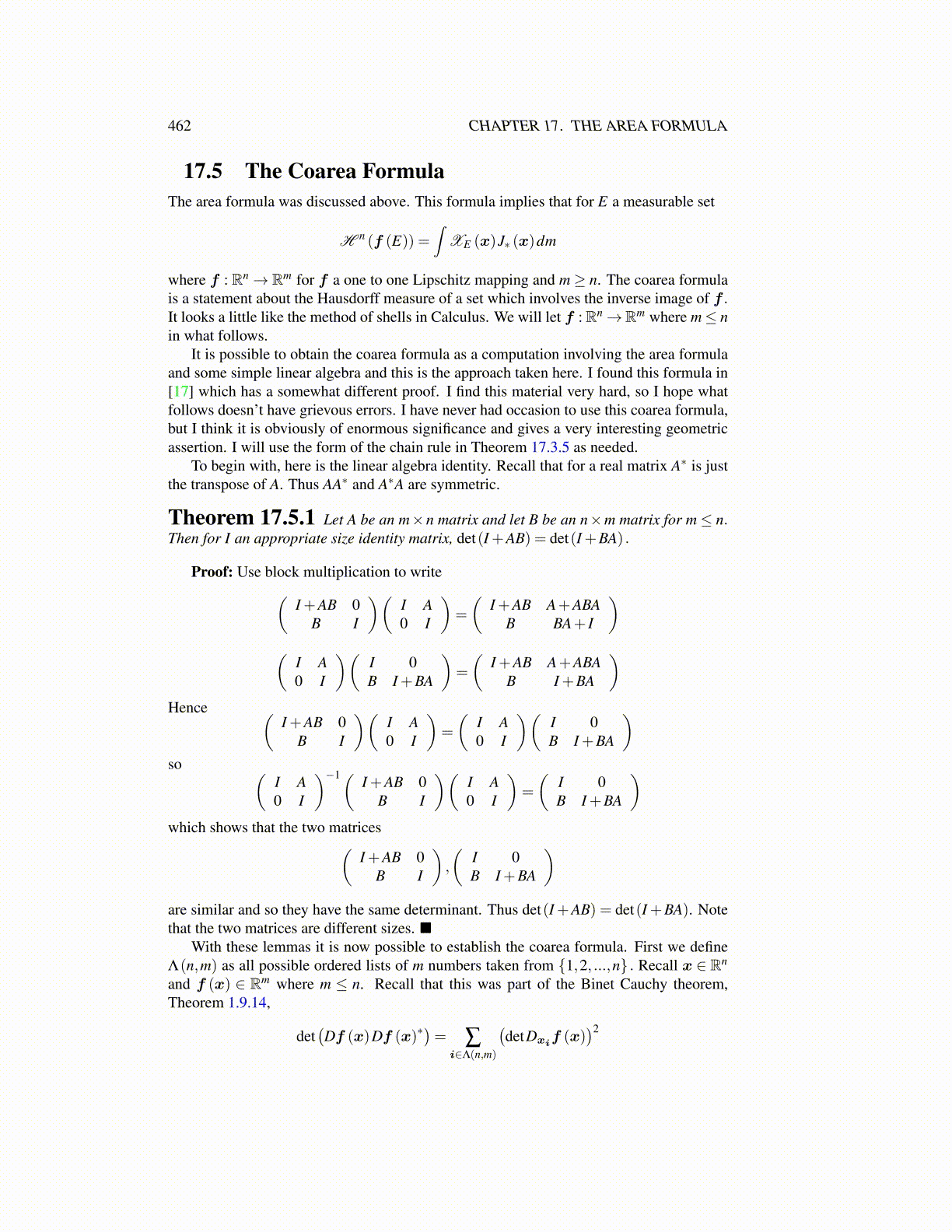
462 CHAPTER 17. THE AREA FORMULA
17.5 The Coarea FormulaThe area formula was discussed above. This formula implies that for E a measurable set
H n (f (E)) =∫
XE (x)J∗ (x)dm
where f : Rn→ Rm for f a one to one Lipschitz mapping and m≥ n. The coarea formulais a statement about the Hausdorff measure of a set which involves the inverse image of f .It looks a little like the method of shells in Calculus. We will let f :Rn→Rm where m≤ nin what follows.
It is possible to obtain the coarea formula as a computation involving the area formulaand some simple linear algebra and this is the approach taken here. I found this formula in[17] which has a somewhat different proof. I find this material very hard, so I hope whatfollows doesn’t have grievous errors. I have never had occasion to use this coarea formula,but I think it is obviously of enormous significance and gives a very interesting geometricassertion. I will use the form of the chain rule in Theorem 17.3.5 as needed.
To begin with, here is the linear algebra identity. Recall that for a real matrix A∗ is justthe transpose of A. Thus AA∗ and A∗A are symmetric.
Theorem 17.5.1 Let A be an m×n matrix and let B be an n×m matrix for m≤ n.Then for I an appropriate size identity matrix, det(I +AB) = det(I +BA) .
Proof: Use block multiplication to write(I +AB 0
B I
)(I A0 I
)=
(I +AB A+ABA
B BA+ I
)(
I A0 I
)(I 0B I +BA
)=
(I +AB A+ABA
B I +BA
)Hence (
I +AB 0B I
)(I A0 I
)=
(I A0 I
)(I 0B I +BA
)so (
I A0 I
)−1( I +AB 0B I
)(I A0 I
)=
(I 0B I +BA
)which shows that the two matrices(
I +AB 0B I
),
(I 0B I +BA
)are similar and so they have the same determinant. Thus det(I +AB) = det(I +BA). Notethat the two matrices are different sizes. ■
With these lemmas it is now possible to establish the coarea formula. First we defineΛ(n,m) as all possible ordered lists of m numbers taken from {1,2, ...,n} . Recall x ∈ Rn
and f (x) ∈ Rm where m ≤ n. Recall that this was part of the Binet Cauchy theorem,Theorem 1.9.14,
det(Df (x)Df (x)∗
)= ∑
i∈Λ(n,m)
(detDxi
f (x))2